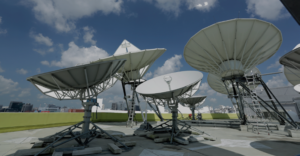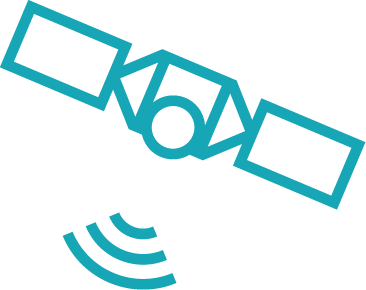Imagine signing up for a data plan promising seamless internet connectivity from satellites above. Suddenly, your connection slows or stops, leaving you with a choice: pay extra fees or wait until next month when the data count resets.
If your connection unexpectedly slows or halts, it may be an indication that the data plan you’ve chosen doesn’t meet your needs. Many are surprised by how much data everyday activities can consume, like sending messages, downloading photos, or streaming content. While you might select a plan based on cost, a connectivity service that doesn’t meet your needs may create more hassles or challenges for you, or for your operations in the long run.


Everyday Data Consumption
Measured in megabytes*
- 1 social media post with a medium-quality photo: 0.4 MB
- 1 email with text attachment: 0.5 MB
- 1 minute of streaming music: 1 MB
- 1 minute of streaming video at standard definition: 7 MB
- 1 hour of web surfing: 100 MB
- 1 high-definition movie: 3,000 – 5,000 MB
*This estimation is based on 4G/LTE-5G or broadband home internet connections. Please note that data consumption and speeds may vary depending on the type of connectivity used. For a more detailed analysis tailored to your specific needs and usage, please contact Speedcast.
Surprised? Consider how many emails and social posts you make or engage with daily. How much time do you spend on websites, or visiting Netflix or YouTube? On average, internet users spend 6.5 hours online every day, with those aged 16 to 24 averaging 9 hours, according to the Global Web Index.

Tips on Choosing the Right Plan
Five tips for effectively choosing a data plan for personal or enterprise use:
- Assess Usage Patterns: Analyze typical data usage by considering the number of users and types of activities. Consider critical applications that you might be running, such as alarms, sensors, and surveillance, as well as everyday tasks like emails, messaging, and video conferencing. Also, consider how often data-intensive tasks occur.
- Estimate Data Needs: Calculate total data requirements based on usage habits and application needs. Determine the minimum data needed for critical applications. Include both individual and shared activities that may require higher data allowances.
- Compare Plan Options: Research and compare plans from various providers. Some offer best-effort services, while others provide committed uptime and quality of service. Learn more about CIR.
- Consider Flexibility: Choose a plan that allows for adjustments in data allocations or add-ons. This enables your business to adapt to changing usage as required. Look for options where you can combine your plan with other connectivity options to ensure a seamless network experience, especially for mobile assets at sea or on land.
- Review Additional Features: Look for features like data usage monitoring or network optimization to enhance value and efficiency.
Having a Fallback Plan
In industries with critical applications, maintaining uptime is crucial, as even minor disruptions can lead to significant financial losses or compromise safety. Businesses around the world trust Speedcast for their remote operations, opting for multi-path solutions that offer high levels of redundancy and support whenever it is needed. Managed through Speedcast’s SIGMA network management platform, customer benefit from a high-performance WAN infrastructure that integrates GEO, MEO, and LEO satellites with fiber, microwave, and cellular technologies seamlessly. The SIGMA platform’s intelligent routing and link prioritization enhance performance and boost productivity, optimizing network traffic and functionality. This approach gives businesses the flexibility to mix and match connectivity types and data plans, ensuring reliable, cost-effective, and robust end-to-end connectivity.
Capacity and connectivity options will continue to grow as more advanced satellites are designed and launched. Ensuring your data plan matches your actual usage is key to securing a service that meets your expectations.
Speak with our experts about the best connectivity offerings for you.



























